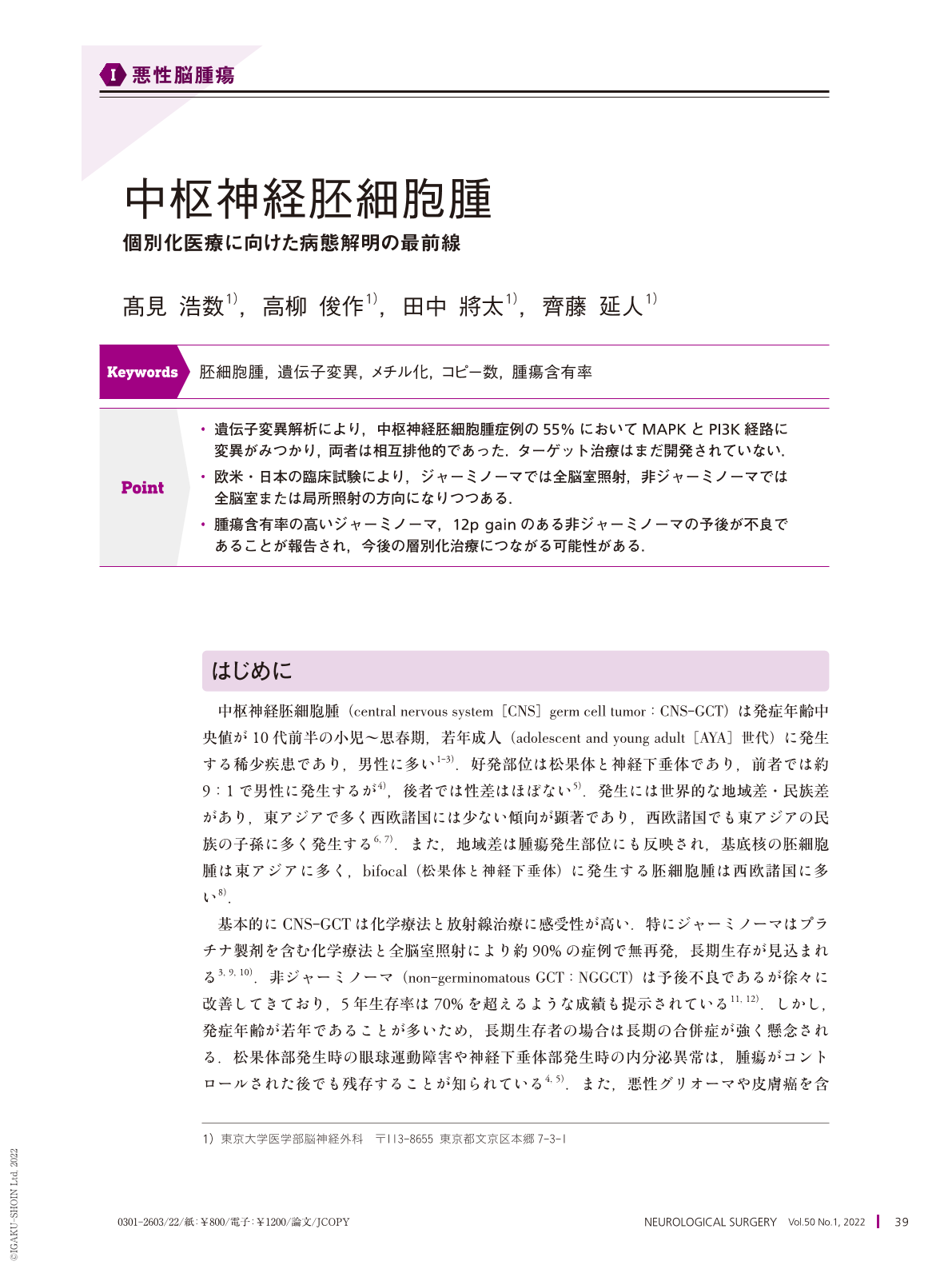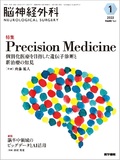Japanese
English
- 有料閲覧
- Abstract 文献概要
- 1ページ目 Look Inside
- 参考文献 Reference
Point
・遺伝子変異解析により,中枢神経胚細胞腫症例の55%においてMAPKとPI3K経路に変異がみつかり,両者は相互排他的であった.ターゲット治療はまだ開発されていない.
・欧米・日本の臨床試験により,ジャーミノーマでは全脳室照射,非ジャーミノーマでは全脳室または局所照射の方向になりつつある.
・腫瘍含有率の高いジャーミノーマ,12p gainのある非ジャーミノーマの予後が不良であることが報告され,今後の層別化治療につながる可能性がある.
Genomic and epigenomic analyses have progressed the exploration of the pathogenesis of CNS germ cell tumors(GCTs)in the past decade. GCTs are characterized by mutations in MAPK or PI3K pathways(55%)and unstable chromosomes, especially 12p gain(45%), as well as global hypomethylation in germinoma. Highly specific microRNA, miR-371a-3p, can be a diagnostic marker in serum and cerebrospinal fluid. Tumor cell content examined in H-E specimens has a prognostic value in germinoma: cases with higher tumor cell content show a worse prognosis. 12p gain in non-germinomatous GCTs(NGGCTs)has an unfavorable prognostic significance. PD-L1 and PD-1 are highly expressed in germinomas and the tumor cell microenvironment, respectively, highlighting the potential effectiveness of immune checkpoint inhibitors. Clinical trials from the Children's Oncology Group(COG)in the US and the Society for Paediatric Oncology(SIOP)in Europe and Japan have shown that whole ventricular irradiation is the most appropriate for germinomas, and that radiation fields can be reduced to the whole ventricle or a local area for localized NGGCTs. Toward personalized medicine, investigations into the structural abnormalities and variants in non-coding regions are needed to develop targeted therapy. A stratified treatment regimen is expected by incorporating newly-found biomarkers to reduce the treatment burden for generally young patients and circumvent late toxicity and sequelae. Establishing effective treatments is crucial for relapsed GCT that has a dismal prognosis.

Copyright © 2022, Igaku-Shoin Ltd. All rights reserved.


